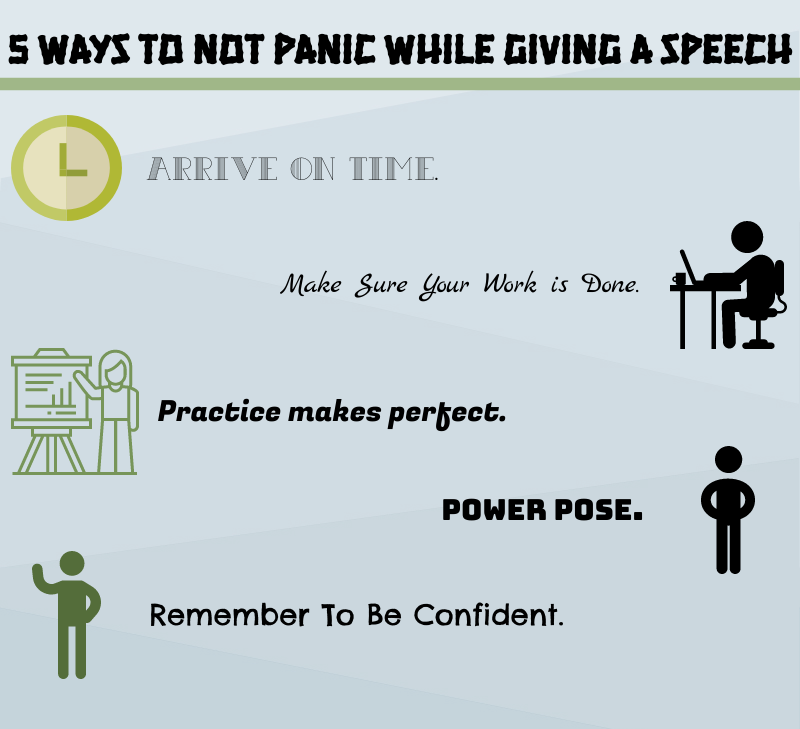How to Not Panic When You’re in Front of a Class
Every class, at some point in time, makes each student stand in front of their peers and give some kind of speech. Here are five ways to not panic while giving that unavoidable presentation.
Infographic of how to not panic while giving a speech.
Arrive on time.
Arrive to class early to mentally prepare for the presentation. Being able to mentally prepare for the presentation can help with confidence. Arriving on time and early helps you prepare for the presentation or speech. Make sure you have everything ready and are organized with your cards for the speech or any notes you may have for the presentation. Arriving early gives you extra time to prepare, which can really help your nerves.
Make sure everything is done.
Nothing is more nerve racking than not having something done and finishing it right before the presentation. Being able to finish the work for the presentation at least the night before gives you more than enough time to prepare for the presentation and prevents you from last-minute moments of panic. Making sure the work is done also helps you be able to practice and ensures you will get a better grade.
Practice makes perfect.
Read through your speech or notes at least five times. If you read through your presentation several times, you will automatically know it well. Looking at your slides can help with confidence. Since you already know what you’re going to say and when to say it, it helps with nerves about the presentation. If you understand what you are about to say, then you have more opportunities to make eye contact. Practice helps boost confidence and makes sure you get your point across effectively.
Power pose.
If you commonly get points taken off because of how you present, practice standing still. One common reason points are taken off is because of moving – some people rock back and forth, play with their hands, or lean against a wall, which can be distracting to the audience. An easy way to fix this is to think about a sharp needle pointing out of the wall, and if you lean back you’re going to be stabbed. Another quick fix is to think of your feet glued to the floor. Also, for your hands, hold them together, or if you’re holding something, hold it by your side to decrease the temptation to look at it.
Remember to be confident.
If you slow down and are sure of what you are going to say, confidence is going to come. Personally, during presentations, I have a huge problem with being confident, but what helps me is to look at the back wall. I always start my presentations by looking at the back wall, which also easily makes it look as if I am making eye contact with people around the room. Another way to seem confident is to turn all of the nerves into enthusiasm. If you seem nervous, the whole presentation is going to be derailed by nerves. Confidence is not easily faked, but it is better to fake it then not have it all. Eye contact and voice control help build confidence and portray this self-assurance to the audience. If you can give off confidence, then your peers will most likely listen longer, which helps you get your point across much more effectively.




